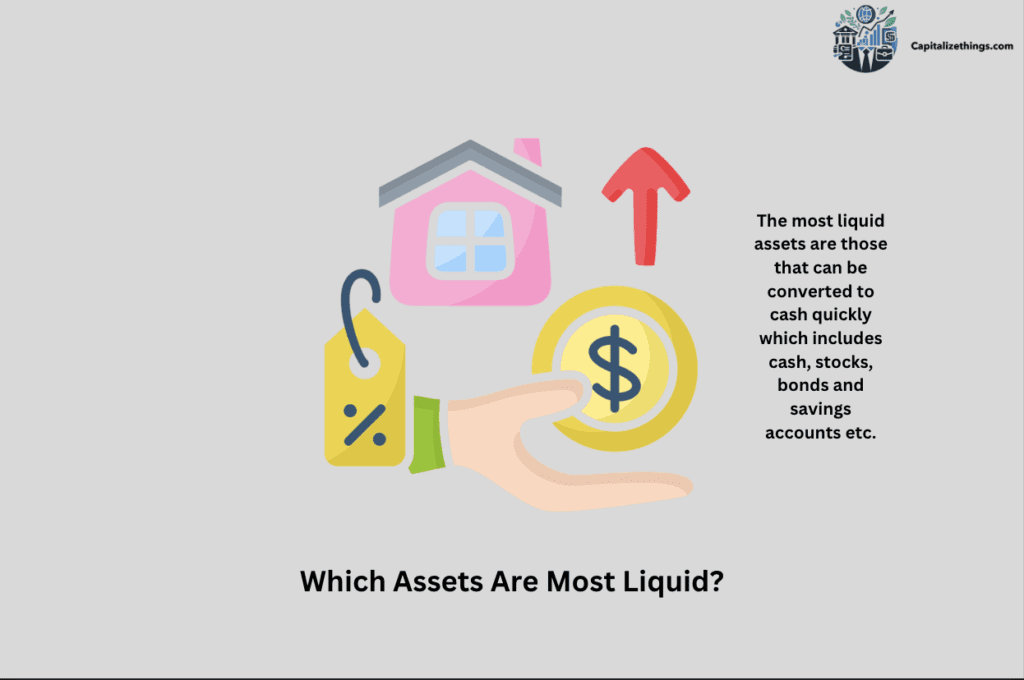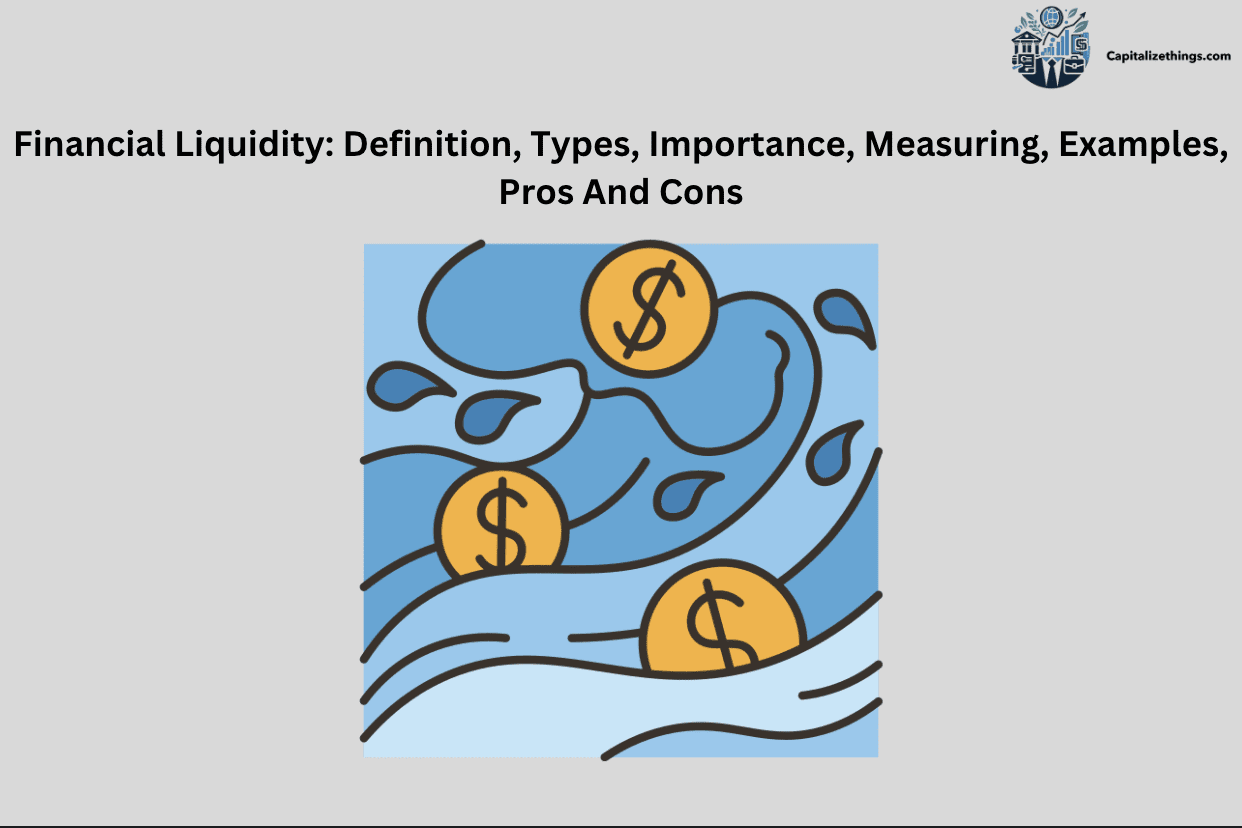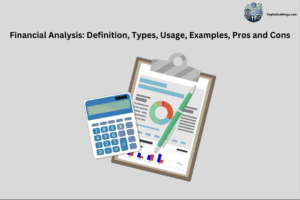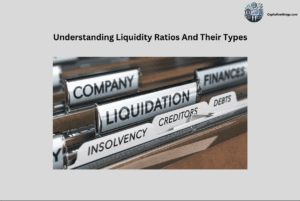Financial liquidity determines how quickly an asset changes into coins. The faster an asset can be bought or used as coins, the more liquid it’s miles. Cash is the most liquid asset on the grounds that it is used right now. On the opposite hand, belongings like actual property or land are less liquid because they take more time to promote. There are different types of liquidity. Cash liquidity refers to money available, that is the maximum liquid. Asset liquidity describes belongings which can quickly be turned into coins, like stocks. Market liquidity focuses on how without problems property can be bought or brought without converting their charge an excessive amount of.
The more liquid an asset or market is, the less complicated it’s far to transform to coins. Liquidity is vital for everyone and corporations. It guarantees that money is to be had whilst wanted for emergencies or brief-term obligations. Having liquidity allows people to avoid borrowing or selling long-term investments at a terrible time. Businesses also need liquidity to pay bills and different short-time period costs, helping them avoid monetary pressure. Financial liquidity can be measured in several approaches. One commonplace method is the modern ratio, which compares modern-day property to present day liabilities. The brief ratio specializes in the maximum liquid belongings. The coins ratio suggests how an awful lot of cash is to be had to cowl quick-time period debt. These ratios help determine whether or not a person or enterprise has enough liquidity to fulfill obligations.
Examples of high liquidity consist of cash, savings bills, and stocks. These were quickly converted into coins if desired. On the other hand, actual property, motors, and artwork are examples of assets with low liquidity, as they take longer to promote or won’t promote for his or her complete cost right away. The pros of monetary liquidity include brief access to coins and the capability to fulfill short-term duties without borrowing. It can also save you monetary pressure in uncertain instances. However, there are a few cons. Highly liquid property might not provide the nice returns, and having an excessive amount of liquidity could mean missed funding possibilities that would have provided higher increase over time.
What Is Financial Liquidity?
Financial liquidity refers to the speed at which an asset can be converted into cash. Cash is a prime example of a liquid asset, as it can be used immediately. Stocks are another example because they can be bought quickly. A house is less liquid as it takes longer to sell. Liquidity subjects because it shows how a good deal cash someone or commercial enterprise can get speedy if wished.
An example of economic liquidity is promoting stocks. You can promote shares fast and get cash. Selling a car is slower and much less liquid. Financial liquidity enables human beings to pay for things like bills and emergencies. Businesses want it to pay employees and buy resources. Having the right liquidity can make handling cash less complicated.
For Financial Liquidity at capitalizethings.com, we provide expert consultations to assess and improve your cash flow management. Reach out through email or call +1 (323)-456-9123 before using the number to speak with our experts, and enjoy a free 15-minute consultation to discuss your liquidity needs.
What Is Liquidity In Personal Finance?
In personal finance, liquidity refers to how easily an individual can access cash from their assets. The greater the liquid the property, the faster a person will pay for matters. Cash in a bank account is the quality liquid asset. A character can take cash out quickly to pay for matters. Stocks can be sold quickly too.
For instance, if someone has $five,000 in financial savings, they are liquid. They can use the money properly for an emergency. If the man or woman owns a chunk of land, it takes months to promote. The land is much less liquid. Personal liquidity enables human beings to pay on time and deal with wonder prices.
What Does Being Financially Liquid Mean?
Being financially liquid means having assets that can be quickly converted into cash. The faster a person or commercial enterprise can promote something for cash, the greater liquid there. Cash is the high-quality type of liquid asset. Other liquid assets include shares and bonds, which can be bought quickly.
For example, if someone has $2,000 in cash and $5,000 in stocks, they’re financially liquid. They can use the cash properly. If they need extra cash, they can sell the stocks fast. Being financially liquid facilitates people and agencies to pay for emergencies and brief-term desires.
What Is Liquidity Mean In Finance?
Liquidity in finance refers to how easily an asset can be converted into cash. The quicker an asset can be liquidated, the more liquid it is considered. Cash is the best liquid asset available. Stocks and bonds are also categorized as liquid, as they can be sold rapidly. Conversely, real estate is less liquid due to the time required to sell properties.
For instance, a company with $50,000 in cash and $100,000 in stocks is very liquid, enabling it to cover costs or pay bills immediately. If the business primarily owns real estate, it may take months to liquidate these assets. Thus, liquidity is crucial for businesses to maintain operations and fulfill short-term obligations.
What Is Liquidity Ratio In Finance?
The liquidity ratio in finance measures how easily a company can meet its short-term obligations. This ratio compares an organization’s liquid assets to its liabilities. A high liquidity ratio indicates that the company can quickly pay its debts. Common liquidity ratios include the current ratio and the quick ratio.
For example, if a company has $10,000 in liquid assets and $5,000 in short-term debts, it has a liquidity ratio of 2. This means it can cover its debts twice over. A low liquidity ratio may suggest difficulties in paying obligations. Companies monitor liquidity ratios to ensure they remain financially healthy and capable of meeting their commitments.
What Is Financial System Liquidity?
Financial system liquidity refers to how easily cash flows within the economy. When liquidity is abundant in the financial system, individuals and businesses can obtain loans or access cash readily. Banks play a crucial role in this process by lending money and facilitating cash flow. Adequate liquidity in the financial system keeps the economy functioning smoothly.
For instance, during an economic crisis, governments and banks can enhance liquidity by lowering interest rates or providing loans, allowing individuals and businesses to access cash quickly. Without sufficient liquidity in the system, companies may struggle to secure loans, potentially leading to economic downturns.
What Is A Liquefied Financial Term?
A liquefied financial term means converting an asset into cash, this process is referred to as liquidation. When a person or commercial enterprise sells something for cash, it has been liquefied. The purpose is to show belongings into money that can be used for different things. This time period is common when agencies promote belongings to elevate cash.
For instance, if an organization needs to pay bills but lacks coins, it sells a number of its equipment. This sale turns the gadget into cash, making it a liquefied asset. Liquefying property enables agencies to live afloat when cash is low.
What Is Financial Liquidity In The Stock Market?
Financial liquidity in the stock market indicates how easily stocks can be bought and sold. An inventory with high liquidity sold quickly without converting its charge a great deal. When an inventory has low liquidity, it’s far harder to sell, and the price can also drop quickly. High liquidity approach smoother trades and less surprises.
For instance, a popular business enterprise’s inventory has high liquidity because many human beings want to shop for and sell it. A smaller agency’s inventory can also have low liquidity because fewer people are buying and selling it. Liquidity in the stock market helps investors make short choices.
What Is Financial Liquidity In Accounting?
Financial liquidity in accounting determines how easily an employer’s assets can be changed into cash. It shows how well a company can cope with quick-term desires. Accountants’ music liquidity to look if the agency has enough cash to pay its payments. They test property like coins, debts receivable, and stock. For example, if an organization has $10,000 in cash and $20,000 in receivables, it has high liquidity. If most of its assets are in land or device, it has low liquidity. Tracking liquidity allows groups to plan for fees and avoid cash troubles.
How Does Liquidity Impact A Company’s Financial Health And Solvency?
Liquidity significantly impacts a company’s financial health by indicating its ability to pay debts promptly. Companies with high liquidity can cover their expenses quickly, thereby avoiding potential issues. In contrast, low liquidity may signal that a company struggles to meet short-term obligations. Solvency, however, refers to a company’s ability to meet all its debts, not just short-term ones.
For example, a company with $50,000 in cash and $20,000 in short-term debts is in good financial health, capable of covering its expenses while retaining some cash reserves. Conversely, a lack of liquid assets can create challenges in paying employees or acquiring necessary materials. Maintaining liquidity is crucial for companies to thrive and sustain their operations.
What Strategies Can Companies Use To Improve Their Liquidity Position?
Companies can enhance their liquidity by selling assets, reducing costs, or borrowing funds. They can also accelerate the collection of receivables. Selling shares or bonds can quickly boost cash.
Reducing fees frees up extra money for quick term wishes. Borrowing from banks or investors brings in cash that can be used properly. For example, an organization that needs greater liquidity might also sell some of its unused equipment. This sale brings in cash that used to pay bills. Companies that stay aware of their liquidity can keep away from monetary issues and live strong inside the market.
How Does Liquidity Affect A Company’s Credit Rating And Borrowing Capacity?
Liquidity plays a critical role in determining how well a company can meet its financial obligations. A company with high liquidity possesses more cash or easily convertible assets, making it more reliable to creditors. Conversely, a company with low liquidity may struggle to pay its debts on time, potentially lowering its credit rating.
A decreased credit rating complicates the company’s ability to secure loans, as lenders may impose higher interest rates to offset the risk. This situation results in higher borrowing costs. In contrast, companies with strong liquidity can obtain loans more easily and at lower rates, underscoring the importance of liquidity for financial stability.
What Are The Different Types Of Financial Liquidity?
There are 4 forms of monetary liquidity that is market liquidity, asset liquidity, investment liquidity and trading liquidity. The first type is market liquidity, which indicates how easily an asset can be bought or sold without impacting its price. Stocks typically exhibit high market liquidity due to their rapid trading. The second type is asset liquidity, reflecting how quickly assets like real estate or stocks can be converted to cash. Stocks are more liquid than real estate.
The third type is investment liquidity, which illustrates how readily a company can meet its financial needs through borrowing or utilizing its assets. The final type is trading liquidity, measuring the volume of an asset that can be traded without affecting its price. High trading liquidity indicates numerous trades can occur without altering prices. Stocks are an example of both high market and asset liquidity, whereas real estate tends to have low asset liquidity due to longer selling times.
What Is Asset Liquidity, And How Does It Differ Across Various Asset Classes?
Asset liquidity signifies how quickly an asset can be converted into cash. Different asset classes exhibit varying degrees of liquidity. Cash is the most liquid asset, readily available for immediate use. Stocks are also classified as liquid, as they can be sold swiftly, typically within days or weeks. In contrast, real estate has lower liquidity, often requiring months to complete a sale.
Other assets, such as art and collectibles, exhibit even lower liquidity, as finding a buyer can take a considerable amount of time and their prices may fluctuate significantly. For instance, while stocks can usually be sold within a few days, real estate sales might extend over months, and art can take years to liquidate effectively.
Why Is Financial Liquidity Important?
Financial liquidity is vital as it helps people and agencies manipulate their money better. With high liquidity, a person or company can cowl surprising prices. They also can pay their payments on time. Without enough liquidity, they might have to borrow money. Borrowing fees extra money because of interest. Liquidity avoids those troubles.
A commercial enterprise with exact liquidity can preserve walking smoothly. It does not need to worry about strolling out of money for essential expenses. For individuals, a liquidity approach they’ve cash to be had when wished. A corporation with high liquidity pays its workers and purchases elements. A person with high liquidity will pay for emergency car repairs without borrowing money.
Why Is Liquidity Critical For A Company’s Short-Term Financial Stability?
Liquidity is essential for maintaining a company’s short-term financial stability by ensuring that it can meet daily obligations. Companies need to pay their employees, suppliers, and other expenses promptly. Without liquidity, they could pass over bills. This can harm their popularity and credit score rating. Liquidity additionally helps companies take advantage of the latest opportunities.
If they no longer have enough liquid property, they pass out. Having excessive liquidity means they could act quick while wanted. Short-time period liquidity keeps a business enterprise running easily without disruptions. A loss of liquidity can cause big problems. A corporation with low liquidity would possibly wage war to pay its workers on time. This can cause delays and damage to the enterprise.
How To Measure Financial Liquidity?
Financial liquidity is assessed using various ratios. One common measure is the present-day ratio. The system is contemporary belongings divided through modern liabilities. Another degree is the quick ratio, which uses the handiest maximum liquid property. The cash ratio suggests how much cash is to be had to pay quick-time period debt. These ratios assist display if a person or corporation has enough liquidity to meet their needs.
Example: An enterprise with an excessive contemporary ratio has more assets than liabilities. This method they’re in precise financial shape.
What Is Liquidity To Asset Ratio?
The liquidity-to-asset ratio compares an organization’s liquid assets to its total assets. The formula is liquid assets divided by way of general belongings. An excessive ratio approach means the employer has extra liquid belongings. This is good due to the fact the business enterprise can meet its brief-term desires.
A low ratio indicates the organization has fewer liquid properties. This can make it harder to handle surprising expenses or pay off money owed. A corporation with a high liquidity-to-asset ratio can quickly pay its payments. A corporation with a low ratio would possibly battle if surprising costs came up.
What Are The 7 Liquidity Ratios?
The 7 Liquidity Ratios Are:
- Current Ratio: Measures if a company pays its quick-time period money owed with its assets.
- Quick Ratio: Shows if an enterprise can pay its quick-time period money owed with its most liquid property.
- Cash Ratio: Focuses on how to cash an organization has to pay off its brief-term debts.
- Operating Cash Flow Ratio: Measures how nicely an organization’s cash goes with the flow can cover its liabilities.
- Net Working Capital Ratio: Shows if a business enterprise can cover its brief-time period money owed with its current assets.
- Days Sales Outstanding: Measures how lengthy it takes for an organization to accumulate its receivables.
- Debt to Equity Ratio: Shows how lots of a corporation’s financing comes from debt as opposed to fairness.
What Is The Current Ratio In Financial Liquidity And How To Measure It?
The current ratio is a measure of a company’s ability to pay its short-term debts using its current assets. It is calculated using the formula: current assets divided by current liabilities. A higher current ratio indicates better liquidity; a ratio above 1 suggests that the company has more assets than liabilities. According to Bankrate, a ratio below 1 indicates that the organization may struggle to pay its debts.
To illustrate, let’s consider a company with current assets of $500,000 and current liabilities of $300,000. The current ratio would be:
Current Ratio= Current Assets/Current Liabilities = 500,000/300,000 ≈1.67
This ratio shows that the company has $1.67 in assets for every dollar of liability, indicating a healthy liquidity position.
What Is The Quick Ratio In Financial Liquidity And How To Measure It?
The quick ratio is a measure of financial liquidity that evaluates a company’s ability to meet its short-term obligations without relying on the sale of inventory. The calculation involves dividing liquid assets, such as cash and receivables, by current liabilities.
A high quick ratio indicates that a business can easily pay its short-term debts without selling inventory. A ratio above 1 is considered good, indicating that the business has enough liquid assets to cover its debts.
What Is The Cash Ratio In Financial Liquidity And How To Measure It?
The cash ratio assesses how much cash a company has available to cover its short-term debts. It focuses solely on cash and cash equivalents. The formula is cash and cash equivalents divided by current liabilities. A high cash ratio suggests that the company has ample cash on hand to meet its obligations. A ratio of 1 or higher is deemed excellent, indicating that the company can cover its liabilities with available cash.
What Is The Purpose Of Liquidity Pool In Decentralized Finance?
Liquidity pools play a crucial role in decentralized finance (DeFi) as they permit individuals to trade cryptocurrencies without the need for intermediaries. A liquidity pool holds pairs of cryptocurrencies. Traders can change among these pairs. The pool keeps trades flowing easily. Liquidity companies earn fees for putting their assets inside the pool.
Liquidity pools are important for decentralized exchanges. They hold the market active and allow rapid trades. A person can use a liquidity pool to change Ethereum for Bitcoin. The exchange happens right away due to the liquidity inside the pool.
Which Assets Are Most Liquid?
The most liquid assets are those that can be converted to cash quickly which includes cash, stocks, bonds and savings accounts etc. Cash is the most liquid asset since it is already in currency form. Stocks are also quite liquid, as they can typically be sold within days. Bonds are liquid but may take longer to sell than stocks.
Savings accounts are very liquid because you can withdraw cash at any time. In contrast, certificates of deposit (CDs) are less liquid since you must wait for a specific period to access the funds. Stocks can be sold within a few days, while CDs might take months to convert to cash.

Which Asset Is The Least Liquid?
The least liquid assets are those that take a long time to sell or convert into cash like Real estate is one example, as selling a house or land can take months. Art and collectibles are also less liquid, as finding a buyer may take time and prices can vary widely. Private companies are often the least liquid; it can take years to sell a business. For instance, selling a house might take several months, while selling rare artwork can take even longer, sometimes years.
Is Cash A Liquid Asset?
Cash is the most liquid asset available. It can be used immediately to purchase goods or pay bills. Individuals and businesses prefer holding cash because it is quick and easy to use. There is no need to sell cash or wait for it to become accessible. Cash can be in the form of paper money or coins, making it the easiest and fastest asset to access.
For example, a person can use cash to buy groceries or pay rent without any delays. This accessibility makes cash the most liquid asset. An example of cash being liquid is when you pay for groceries. You can give the store cash, completing the transaction instantly. Cash is also easily obtainable from a bank, eliminating the need for trading or selling, unlike other assets. This is why cash is considered the ultimate form of liquidity.
What Are Less Liquid Assets Than Cash For Investors?
Less liquid assets for investors include coins, stamps, art, and various collectibles. These items are harder to promote fast. Investors need to anticipate a customer to expose interest. Coins and stamps are special and precious; however they want a consumer who knows their well worth. Art and collectibles like rare gadgets can take even longer to sell due to the fact fewer human beings need to buy them.
For instance, if an investor has an unprecedented stamp, it is able to take months to discover a person willing to pay an excellent price. This makes cash, stamps, and artwork less liquid than coins. Collectibles are not beneficial for quick cash desires. Investors keep these belongings for a long time and expect prices to grow, however they have to wait to sell them.
What Assets Do Small Businesses Hold To Quick Liquify Them?
Small businesses typically hold assets like inventory, accounts receivable, and cash to quickly liquefy them. Inventory refers to goods that can be sold immediately. If a business needs cash quickly, it can sell its products. Accounts receivable means the money owed to the business by customers. When customers pay their bills, the business receives cash.
For example, a small shop has items on the shelves. If the shop needs cash, it can sell the items and obtain funds. The store can also ask customers to pay what they owe. These assets help businesses maintain strength and meet their obligations. They are crucial because they are fast to convert into cash.
What Investment Assets Take Longer To Cash?
Investment assets that take longer to convert to cash include real estate, bonds, and certificates of deposit. Real estate refers to houses, land, or buildings, which can take months to sell. Bonds represent loans to corporations or governments, and they do not provide cash until the loan is repaid. Certificates of deposit lock in money for a specified time, often a year.
For instance, if an investor owns a house, selling it can be a lengthy process. The investor cannot quickly access the funds. Bonds are also slow, as the issuer takes years to repay. These investment properties lack liquidity, forcing investors to wait to access cash.
What Is Liquidity Risk In Finance?
Liquidity risk refers to the possibility of not having enough cash available when needed. This can appear if someone or enterprise owns belongings which might be difficult to sell. If they want quick cash, they won’t be able to promote the assets quickly enough. This danger can motivate huge troubles, like missing payments or even going bankrupt.
An example of liquidity risk is owning a house but needing cash for an emergency. The house cannot be sold immediately, leaving no quick cash available. Businesses face this risk if they have assets but cannot sell them in time to pay bills. Managing liquidity risk is crucial for maintaining cash flow when needed.
What Are The Advantages Of Financial Liquidity?
Financial liquidity offers several advantages, including quick access to cash for individuals and businesses. This makes it smooth to pay bills or take care of emergencies. Liquid property like cash or stocks offered speedy without awaiting consumers. This facilitates avoiding borrowing or selling other long-time period belongings at an awful time.
For instance, if someone requires money for medical expenses, having cash or shares is beneficial, allowing for immediate access to funds. Businesses also benefit, as they can pay employees and purchase supplies without delays. Liquidity helps individuals and companies remain strong and better manage challenges.
What Are The Disadvantages Of Financial Liquidity?
The disadvantages of having excessive financial liquidity include lower growth potential for investments. Liquid assets like cash may not grow as quickly as other investments. Holding too much cash can mean missing out on opportunities for higher returns. Investors often see smaller profits because they keep their funds in liquid assets rather than investing in long-term assets like real estate.
For example, if someone holds an excess amount of cash, they might miss a chance to invest in properties or stocks that could appreciate over time. Businesses that maintain too many liquid assets may also overlook significant growth opportunities. Excessive liquidity can ultimately decrease future profits.
What Are The Consequences Of Low Liquidity For Businesses And Investors?
Low liquidity can lead to severe consequences for businesses and investors. Businesses with low liquidity won’t have sufficient cash to pay bills or workers. This can lead to missed payments or even financial disaster. Investors with low liquidity won’t be able to sell belongings when they need cash. This can motivate them to lose cash or miss vital payments.
For example, an enterprise with many assets but no cash won’t be capable of paying its workers on time. The workers might also stop, and the business will fail. An investor preserving a residence might want cash but can’t promote the residence quickly. Low liquidity creates strain and risks that could harm agencies and traders.
Get personalized liquidity risk assessments by our financial experts to help your business stay resilient during low liquidity periods. Reach out via emailing us at our services page or call +1 (323)-456-9123 for a free 15-minute consultation before hiring our team at capitalizethings.com.
What Are The Most Liquid Currency Pairs In The Forex Market, And Why?
The most liquid currency pairs in the Forex market typically include major currencies like the U.S. Dollar (USD), Euro (EUR), and Japanese Yen (JPY). The EUR/USD pair is the maximum liquid because it’s miles traded frequently. The USD/JPY and GBP/USD pairs also are very liquid.
For instance, if someone wants to change the EUR/USD pair, they can do it quickly because many humans are shopping for and promoting this pair. This makes it clean to discover a customer or vendor, which keeps prices regular. The liquidity of these pairs facilitates traders to keep away from large price modifications and trade easily.
How Does Liquidity Risk Affect Traders And Investors In The Forex Market?
Liquidity risk affects traders and investors in the Forex market by making it challenging to execute trades quickly. When liquidity is low, buyers might not be able to shop for or promote currencies on the fees they want. This can reason losses. High liquidity helps buyers get the best costs, but low liquidity makes trades tougher and riskier.
For example, if a dealer tries to sell a foreign money all through a time of low liquidity, they do not discover a client right away. This delay can lead to lower profits or losses. Liquidity change within the forex market can make buying and selling greater annoying and boom the threat of losing money.
How Do Central Bank Policies And Interest Rates Influence Liquidity In The Financial System?
Central bank policies and interest rates significantly influence liquidity in the financial system, when central banks decrease interest rates, it becomes inexpensive for human beings and companies to borrow cash. This increases liquidity due to the fact that more money is available. When principal banks raise interest charges, borrowing will become greater high-priced, and liquidity decreases.
For example, if the principal financial institution lowers interest charges, corporations additionally borrow extra money to develop. This creates extra liquidity in the device. On the opposite hand, better hobby prices could make borrowing harder, which slows down liquidity. Central banks control liquidity to preserve the financial system stable and healthful.
What Is The Difference Between Financial Liquidity And Solvency?
Financial liquidity refers to how quickly an asset can be converted into cash, while solvency relates to whether an individual or business has enough assets to cover all its debts. Solvency is ready for lengthy-term health. A business can be liquid however no longer solvent, or solvent but now not liquid. Both are crucial for economic fitness.
For instance, a company may have enough assets to cover its debts (solvency) but not enough cash to pay immediate bills (liquidity). Understanding the difference helps individuals and businesses manage their finances effectively.
What Is The Difference Between Market Liquidity And Asset Liquidity?
Market liquidity refers to how easily assets can be bought or sold without affecting their price, while asset liquidity is about how quickly an asset can be converted into cash. A marketplace with high liquidity has many buyers and sellers, so prices remain stable. Asset liquidity looks at one component, like shares or houses, and the way fast they are able to sell.
Both have an effect on how speedy money works. For instance, stocks in big markets are fairly liquid. They promote fast without dropping a good deal cost. Houses take longer to sell, so they have lower asset liquidity. A market wishes for each type of liquidity to help humans and corporations get coins quickly when wanted.
What Is The Relationship Between Liquidity And Profitability, And How Can Businesses Balance The Two?
Liquidity is the availability of cash in the short term, while profitability refers to a business’s ability to generate income over time. A business requires both to thrive. Excess liquidity might result in missed opportunities for investment and growth, while insufficient liquidity can lead to cash flow problems and difficulty meeting obligations. Finding a balance enables a business to expand while remaining secure.
Businesses should determine how much cash to retain while also pursuing profitable investments. For example, a bakery needs enough cash to purchase ingredients but also to invest in new locations. If the bakery holds too much cash, it may miss out on growth opportunities; if it invests too much, it may not have sufficient funds to cover operational costs. Balancing liquidity and profitability allows the bakery to flourish and maintain financial health.
What Role Do Central Banks Play In Providing Liquidity To The Forex Market?
Central banks are crucial for ensuring liquidity in the forex market. They lend money to banks whilst wanted. This enables banks to alternate currencies smoothly. If a rustic’s foreign money wishes for aid, the imperative bank can buy or sell it. Central banks additionally set hobby fees, which have an effect on liquidity.
Their movements assist maintain the foreign exchange marketplace steady and operating. For instance, if a financial institution needs extra money to trade, the important financial institution might lend it. This continues the financial institution trading and facilitates others too. Central banks make certain there’s sufficient liquidity in order that the forex marketplace works nicely and facilitates groups around the world.
Does A Chartered Financial Planner Manage Financial Liquidity?
Yes, a Chartered Financial Planner helps individuals manage their financial liquidity by ensuring they have enough cash for short-term needs. They look at savings, costs, and future dreams. They assist human beings to decide how much to hold in coins and how much to invest. They ensure that humans will pay for emergencies and nonetheless attain long-term desires.
For instance, if someone wishes to buy a vehicle, the financial planner facilitates them to determine how much to save. They additionally assist them invest in methods that develop cash without dropping liquidity. A Chartered Financial Planner makes sure there’s a stability between having coins now and growing money for destiny.
Get expert liquidity management advice from Chartered Financial Planners at capitalizethings.com. Call or reach out via emailing us before using +1 (323)-456-9123 to discuss your needs, and take advantage of our free 15-minute call before hiring a professional to optimize your financial health.
Are Chartered Financial Analysts Experts In Managing Financial Liquidity?
Yes, Chartered Financial Analysts (CFAs) specialize in managing financial liquidity and investments. They analyze markets and understand how belongings work. They assist organizations and those manage monetary liquidity. CFAs know a way to balance cash with investments. They use their abilities to make certain their sufficient liquidity to meet brief-time period wishes and hold developing wealth. They are professional at managing dangers and returns.
For example, a CFA might help a company determine how much cash to keep readily available for emergencies while advising on investments that can be quickly converted to cash if necessary. Their expertise ensures clients effectively manage their financial liquidity while striving for wealth growth.
Can Value Stream Costing Improve Financial Liquidity Management?
Yes, Value Stream Costing helps identify where money is spent within a business. It allows corporations to locate in which they spend too much and might reduce charges. This improves economic liquidity because it saves cash. Businesses that use cost move costing can quickly see how to preserve extra money available for brief-term needs.
This helps with higher planning and handling money. For instance, a manufacturing facility making shoes locates it and spends an excessive amount on packaging. By slicing packaging charges, the factory continues to sell more cash. This extra cash improves liquidity, permitting the factory to pay payments and grow. Value stream costing enables agencies to preserve their liquidity robustly even as staying green.
Is There A Relationship Between Financial Liquidity And Value Chain analysis Efficiency?
Yes, financial liquidity and value chain analysis efficiency are interrelated. Value chain costing looks at how a whole lot of every step of making a product costs. By locating methods to keep cash, businesses can hold greater coins handy. This improves economic liquidity. The better a business controls its expenses, the greater liquidity it has.
It can then use that liquidity to pay quick-time period costs or make investments. For instance, an espresso company decreases charges by way of shopping for less expensive espresso beans. This saves money and boosts liquidity. With better liquidity, the enterprise can open new stores or repay money owed faster. Value chain costing helps corporations enhance liquidity through making each a part of the process cheaper.
Is Maintaining Financial Liquidity Crucial For Personal Finance Stability?
Yes, maintaining financial liquidity is essential for personal finance stability. It enables individuals to meet emergency expenses and short-term financial needs. Without liquidity, human beings would possibly sell vital property or borrow cash. Keeping sufficient coins accessible approaches fewer worries when sudden charges arise.
It also allows human beings to devise long-term desires without risking their economic health. For instance, if someone suddenly wishes to restore their automobile, having liquid assets like savings, they are able to pay for it right away. If they don’t have enough liquidity, they might need to borrow or sell something critical. Maintaining liquidity continues private finances solid and safe.
Does A Lack Of Financial Literacy Impact One’s Financial Liquidity?
Yes, a lack of financial literacy negatively affects financial liquidity. People who do not recognize cash won’t hold enough coins for emergencies. They would possibly invest too much without considering short-time period desires. Financial literacy allows humans to understand a way to stability, saving, spending, and making an investment.
It teaches them to devise for liquidity, so they continually have cash once they need it. For example, someone who doesn’t understand approximately liquidity would possibly put all their cash right into a house. If they need cash quickly, promoting the residence takes time. With better financial literacy, they would hold enough coins available for quick-term wishes. Understanding liquidity allows human beings to avoid cash problems and plan higher.
Does Adopting Activity-Based Costing Impact Financial Liquidity Strategies?
Yes, Activity-Based Costing (ABC) can significantly impact financial liquidity strategies. By analyzing the costs associated with each activity within a business, organizations can identify and reduce expenses that drain cash reserves. ABC allows businesses to see where they spend excessively and address those inefficiencies, ultimately preserving cash for short-term needs or growth opportunities.
For example, a company might discover that a specific process is overly expensive. By applying ABC, it can streamline operations, save money, and improve liquidity. This increased liquidity enables the company to pay bills promptly and plan effectively for future investments.
What is The Liquidity And Availability Of Financial Assets?
Liquidity of financial assets refers to how quickly an asset can be converted into cash, while availability indicates if the asset is ready to use. Highly liquid belongings, like coins, are continually to be had. Other properties, like real property, take time to sell and won’t be available properly. Knowing the liquidity and availability of property allows human beings and businesses to plan for quick-time period desires.
For example, a company might hold cash in stocks, which are liquid and readily available for transactions. However, if the business has investments in land, it may take considerable time to liquidate those assets, making them less available. Assessing liquidity and availability is crucial for effective financial management.
What Does Being Financially Liquid Mean?
Being financially liquid means having cash or assets that can quickly convert to cash. It allows paying short-term expenses or coping with emergencies. A person or business that is financially liquid does no longer need to borrow money for fast desires. Being liquid offers safety and allows better planning for each short-time period and lengthy-term dreams.
For instance, someone with financial savings in a bank is financially liquid. They can use the coins for whatever they want right away. On the other hand, if all their cash is tied up in a residence, they’re no longer liquid and might battle in an emergency. Being financially liquid maintains cash ready for any need.
What Is A Liquefied Financial Term?
A liquefied financial term refers to converting an asset into a more accessible cash form. It should confer with turning property into cash quickly. It facilitates quick-time period desires or making investments. Liquefying assets promotes them or turns them into liquid bureaucracy. Businesses and people do that to enhance liquidity. Liquefying belongings helps preserve cash equipped for short-time period desires.
For instance, if a person has stocks, they could sell them to get coins. This system is called liquefying. It makes certain there enough cash to be had for payments or investments. Liquefied economic terms assist people maintain their finances bendy and safe.
What Does Being Financially Liquid Mean?
Being financially liquid means having cash or assets that can be quickly converted to cash. It allows paying short-time period charges or managing emergencies. A person or commercial enterprise this is financially liquid does not want to borrow money for immediate needs. Being liquid offers security and facilitates better planning for each brief-term and long-time period goals.
For example, someone with savings in a financial institution is financially liquid. They can use the cash for whatever they want properly. On the other hand, if all their money is tied up in a residence, they no longer liquid and struggle in an emergency. Being financially liquid continues cash ready for any want.
What Are Solvency Liquidity And Profitability Ratios?
Solvency, liquidity, and profitability ratios are essential metrics for assessing a business’s financial health. Solvency ratios have a look at how properly an enterprise will pay long-time period money owed. Liquidity ratios display if an enterprise has sufficient coins for brief-term wishes. Profitability ratios display if a commercial enterprise is getting cash.
These ratios assist companies make selections and plan for boom. For example, an agency with true solvency pays its money owed. If the organization has exact liquidity, it has cash prepared for short-time period desires. If the employer is worthwhile, it makes extra money than it spends. Using those ratios facilitates the commercial enterprise to stay strong and develop.
What Is Financial Analysis Of Liquidity?
Financial analysis of liquidity involves assessing how much cash a business or individual has available. This analysis checks whether there are enough liquid assets to meet short-term obligations. It provides insight into financial health and helps in planning for future financial commitments.
For instance, a retail store might conduct a financial analysis of liquidity to determine if it has enough funds to cover bills and inventory purchases. If the analysis reveals insufficient liquidity, the store may decide to sell assets or increase sales to generate more cash. Overall, financial analysis of liquidity is crucial for making informed financial decisions and ensuring long-term stability.
Conclude:
Financial liquidity is essential for each person and companies. It enables certain cash to be available for short-term needs and emergencies. Managing liquidity includes balancing liquid property, like coins and shares, with much less liquid investments, which include real estate. Liquidity differs from solvency and profitability, however all 3 are key to economic health. Using equipment like solvency and liquidity ratios facilitates in expertise economic balance. Central banks, financial planners, and analysts play crucial roles in retaining liquidity. Techniques like price circulate costing and pastime-primarily based costing can also improve liquidity. Overall, robust liquidity control keeps the price range flexible, stable, and prepared for unexpected costs, assisting human beings and groups plan for future increase.

Larry Frank is an accomplished financial analyst with over a decade of expertise in the finance sector. He holds a Master’s degree in Financial Economics from Johns Hopkins University and specializes in investment strategies, portfolio optimization, and market analytics. Renowned for his adept financial modeling and acute understanding of economic patterns, John provides invaluable insights to individual investors and corporations alike. His authoritative voice in financial publications underscores his status as a distinguished thought leader in the industry.









